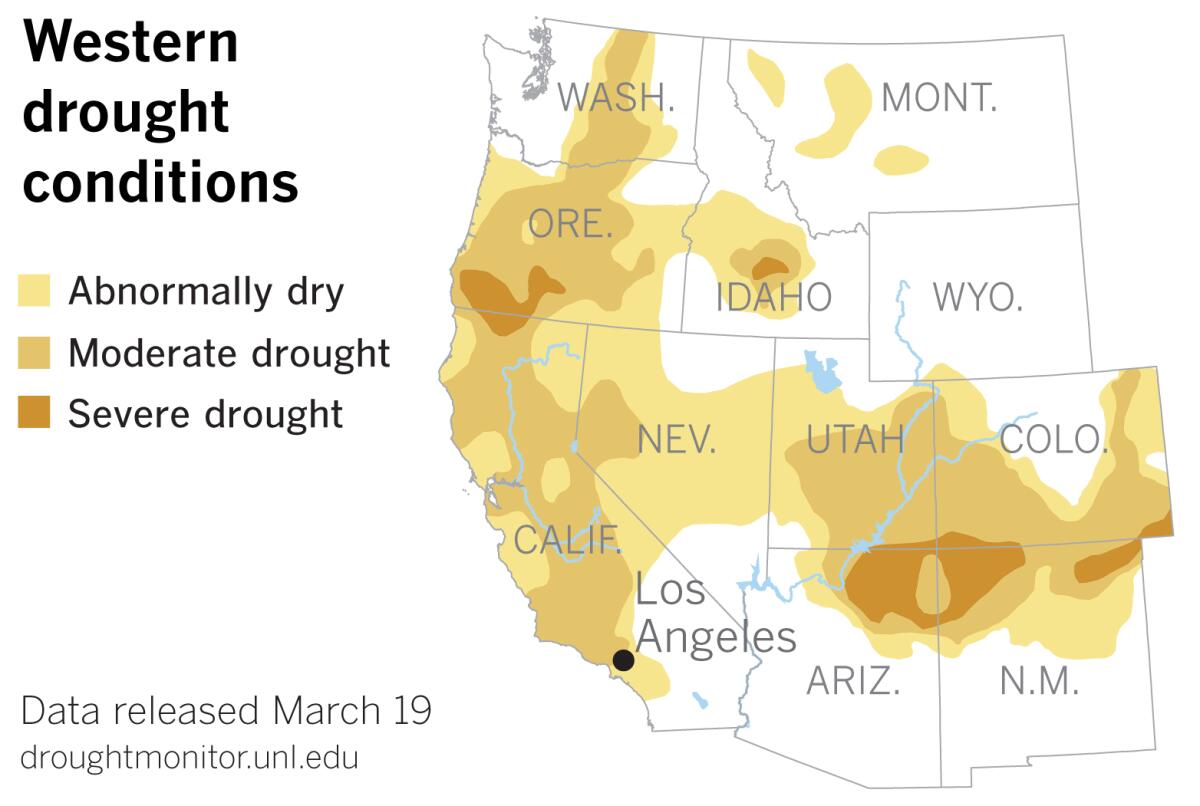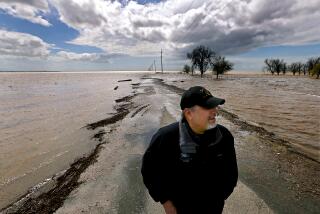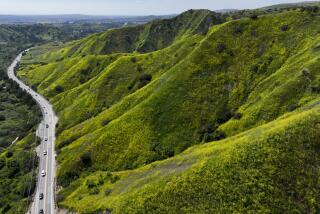The West is in an expanding 20-year drought that a ‘March Miracle’ will do little to change

- Share via
The most recent U.S. Drought Monitor released Thursday shows that although recent rains have provided some relief for Southern California, Northern California remains locked in moderate drought or abnormally dry conditions.
An area near the Klamath River in extreme Northern California and southern Oregon that missed out on heavy precipitation this season has slipped into severe drought. The area joins other parts of the West, including a portion of south-central Idaho and a large chunk of land in the Four Corners region, in severe drought.
It is that area around the Four Corners, where Utah, Arizona, Colorado and New Mexico meet, along with the parts of California that are drained by the Sacramento and San Joaquin rivers, that are most consequential to Southern California water users. The area around the Four Corners is part of the Colorado River watershed. Water from the Colorado River is one source of supply to the Los Angeles region, via the Colorado River Aqueduct.
That Four-Corners area is in severe drought, and it is surrounded by areas of moderate drought that cover much of Utah and Colorado, as well as northeastern Arizona and northern New Mexico.
“What I call the continuing drought has waxed and waned, but we’ve generally stayed near the threshold of large-scale severe drought in the West and Southwest,” said climatologist Bill Patzert. “This year, like the previous five to 10 years, has water managers working their worry beads.”
The Colorado River flows from its headwaters in the Rocky Mountains. The river and its tributaries drain about 246,000 square miles, including southwestern Wyoming, most of western Colorado and New Mexico, nearly all of Arizona, and portions of Utah, Nevada and California. But a large portion of the Colorado River watershed is in drought.
“There’s no quick fix to a long drought,” said Patzert, citing groundwater basins and Lake Mead, the reservoir formed by the Hoover Dam on the Colorado, as the West’s large-scale drought monitors. Lake Mead takes 17 years to fill with normal rainfall, and groundwater basins take a long time to replenish.
“It takes more than one wet year in the Sierra Nevada to bust a drought,” said Patzert, especially when the drought encompasses much of the West. “When the Pacific Northwest and California are dry, the Rockies are dry.”
“Don’t get too euphoric about our mini-March Miracle,” Patzert warns. “It doesn’t fill the bill as a drought buster, and it certainly is a fuel-maker for the summer fire season.”
Scott McLean of Cal Fire agrees, noting the varied nature of rainfall throughout the state. “It just waters the vegetation,” promoting growth of “light, flashy fuel such as grass and weeds that are the fuse that lights wildfires.”
McLean maintains that several years of significant precipitation are needed to end the drought. He said that while he appreciates the rain, “we still have a ways to go.”
Southern California has fared better than Northern California this year, but even that isn’t great. Downtown Los Angeles has received just 10.12 inches of rain since Oct.1 — 80% of normal. By this point in the season, downtown Los Angeles should be at 12.63 inches, on average. Last year at this time, it had 17.99 inches in the rain gauge.
Meanwhile, and more importantly, the Northern Sierra 8-Station Index stands at 57% of normal, as of Thursday, according to the California Department of Water Resources. The index is the average of eight precipitation measuring sites that provide a representative sample of the Northern Sierra’s major watersheds. These watersheds include the Sacramento, Feather, Yuba and American rivers, which flow into some of California’s biggest reservoirs. Along with water from the Colorado River, they provide a large portion of the Los Angeles and Southern California water supply.
Summing up, the drought in California and the West has been “on-again, off-again,” said Patzert, “but now it looks like it’s on again. And a wannabe March Miracle isn’t likely to end it.”
More to Read
Sign up for Essential California
The most important California stories and recommendations in your inbox every morning.
You may occasionally receive promotional content from the Los Angeles Times.











